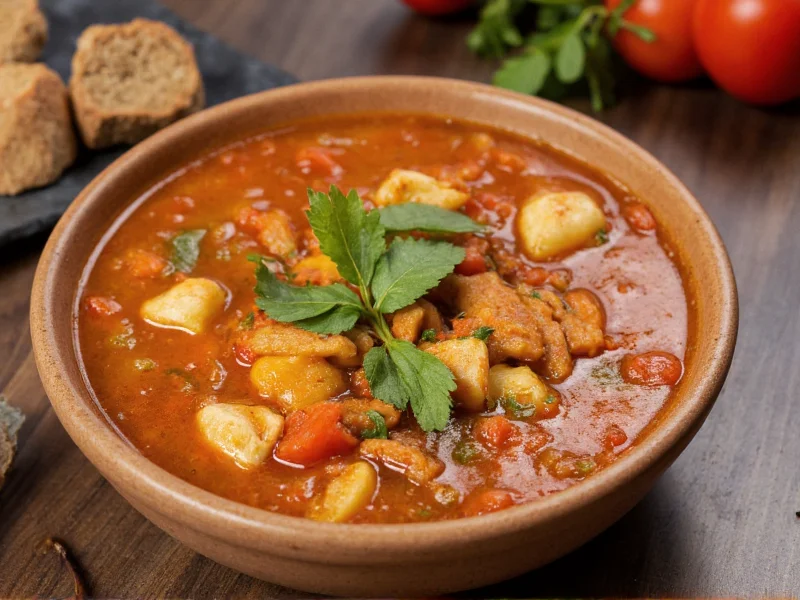Many people searching for “tlalpeno soup” encounter confusion because this specific dish doesn’t exist in authentic Mexican culinary tradition. The term appears to be a misspelling or conflation of several genuine Mexican food terms. Understanding the roots of this confusion helps uncover the authentic dishes you might actually be seeking.
Understanding the Tlalpeno Soup Confusion
The “tlalpeno” designation likely combines elements from two distinct Mexican culinary concepts: “tlalpan” (referring to Tlalpan, a borough in Mexico City) and “jalapeño” (the popular chili pepper). Alternatively, it may stem from mishearing “tlacoyo”, a traditional masa-based dish from central Mexico. Mexican cuisine features numerous regional soups, but none officially called “tlalpeno soup.”
Authentic Mexican Dishes Often Confused with Tlalpeno Soup
Several genuine Mexican dishes frequently get misidentified in online searches. These authentic preparations represent the rich culinary heritage that might match your search intent:
| Commonly Confused Term | Actual Dish | Regional Origin | Key Characteristics |
|---|---|---|---|
| Tlalpeno Soup | Not a recognized dish | N/A | Appears to be a misspelling or conflation |
| Tlacoyo | Masa-based street food | Central Mexico | Oval-shaped masa dough topped with beans, cheese, or other fillings |
| Mole Poblano | Complex sauce often used in soups | Puebla | Rich blend of chilies, chocolate, spices, and nuts |
| Pozole | Traditional hominy soup | Throughout Mexico | Three color varieties (red, green, white) with meat and garnishes |
Genuine Mexican Soup Traditions You Might Be Seeking
If you’re searching for a traditional Mexican soup experience, several authentic options likely match your culinary interests. These regional specialties have been perfected over generations and represent the diverse flavors of Mexican cuisine:
Pozole: Mexico's Celebratory Soup
Pozole stands as one of Mexico’s most iconic soups, traditionally prepared for special occasions. This hearty hominy-based soup features three distinct regional variations:
- Pozole Rojo (red) from Jalisco and Mexico State, made with guajillo chilies
- Pozole Verde (green) from Guerrero, featuring tomatillos and pumpkin seeds
- Pozole Blanco (white) from Sinaloa, served without chili sauce
The soup’s foundation is nixtamalized hominy corn, simmered with pork or chicken, then garnished with shredded cabbage, radishes, avocado, and lime. Authentic pozole requires careful preparation of the hominy, which cannot be substituted with canned versions for true flavor.
Sopa de Lima: Yucatan's Citrus Soup
Hailing from the Yucatan Peninsula, Sopa de Lima features a delicate balance of citrus and spices. This chicken-based soup gets its distinctive flavor from lima criolla (Mexican lime), achiote paste, and epazote herb. Unlike many Mexican dishes, it avoids heavy chili heat in favor of bright, aromatic notes. The soup traditionally includes fried tortilla strips and is often served during Day of the Dead celebrations.
Caldo de Tomate: Simple Tomato Soup with Depth
Don’t mistake this humble soup for ordinary tomato bisque. Authentic Caldo de Tomate features roasted tomatoes, garlic, and epazote simmered with chicken or beef broth. Regional variations might include potatoes, carrots, or zucchini. The secret lies in roasting the tomatoes and chilies until slightly charred, creating complex flavor notes that canned tomato products cannot replicate. This everyday soup appears in nearly every Mexican household, often customized with available ingredients.
Why Authentic Terminology Matters in Mexican Cuisine
Mexican food terminology carries cultural significance that extends beyond mere labels. Using correct terms honors the culinary traditions and helps preserve regional distinctions. When searching for authentic recipes, precise terminology ensures you access genuine preparations rather than inauthentic adaptations. Many traditional Mexican soups have protected designation of origin status, meaning their preparation methods and ingredients are legally defined.
For example, true Mole Poblano must contain at least 20 ingredients, including specific chili varieties, chocolate, and spices prepared through a multi-day process. Calling a simple chili-chocolate sauce “mole” diminishes the cultural significance of this complex culinary achievement recognized by UNESCO as intangible cultural heritage.
Creating Authentic Mexican Soup at Home
When preparing traditional Mexican soups, certain techniques separate authentic preparations from approximations. These professional tips help recreate genuine flavors:
- Toast your spices - Dry toast whole spices before grinding to release essential oils
- Roast fresh ingredients - Char tomatoes, chilies, and onions on a comal or under broiler
- Use proper stock - Homemade chicken or beef stock forms the flavor foundation
- Layer flavors - Add ingredients in sequence based on cooking time requirements
- Finish with fresh herbs - Add epazote or cilantro just before serving
Authentic Mexican cooking emphasizes technique over complexity. Many traditional soups require minimal ingredients but demand attention to preparation details. The difference between a good soup and an authentic one often lies in these subtle techniques rather than exotic ingredients.
Exploring Regional Mexican Soup Varieties
Mexico’s diverse geography produces remarkable regional soup variations. Understanding these distinctions helps identify which authentic preparation might match your search for “tlalpeno soup”:
- Northern Mexico - Features hearty meat-based soups like caldo de res (beef soup) with abundant vegetables
- Central Mexico - Known for pozole and sopa de arroz (rice soup) with tomato-based broths
- Coastal Regions - Specialize in seafood soups like caldo de mariscos with fresh ocean ingredients
- Yucatan Peninsula - Creates distinctive citrus-based soups with Mayan influences
Each region’s soup traditions reflect local agricultural products, historical influences, and climate considerations. This diversity explains why a single “tlalpeno soup” doesn’t exist – Mexican cuisine celebrates regional specificity rather than monolithic dishes.











 浙公网安备
33010002000092号
浙公网安备
33010002000092号 浙B2-20120091-4
浙B2-20120091-4